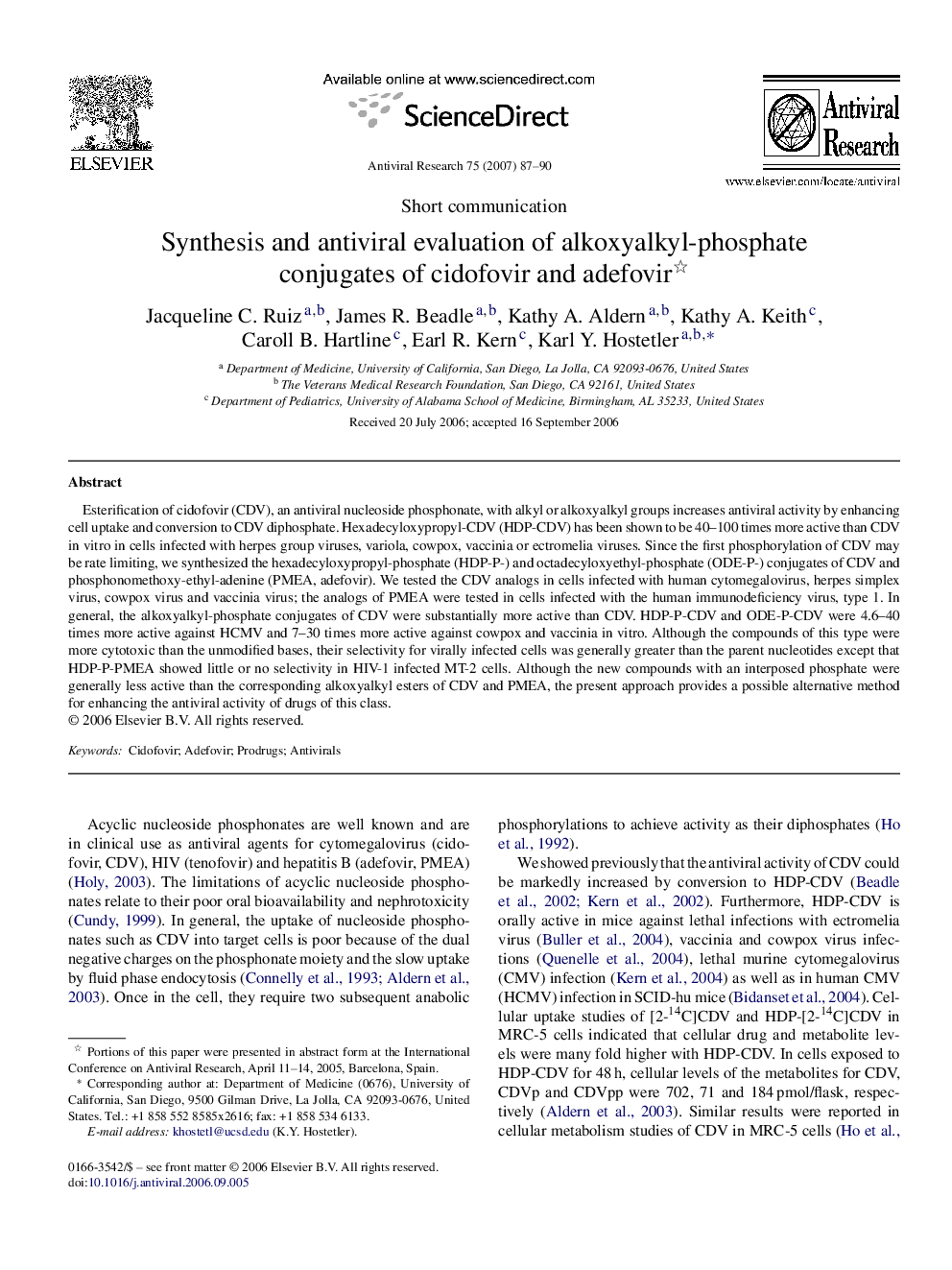| Article ID | Journal | Published Year | Pages | File Type |
|---|---|---|---|---|
| 2511286 | Antiviral Research | 2007 | 4 Pages |
Esterification of cidofovir (CDV), an antiviral nucleoside phosphonate, with alkyl or alkoxyalkyl groups increases antiviral activity by enhancing cell uptake and conversion to CDV diphosphate. Hexadecyloxypropyl-CDV (HDP-CDV) has been shown to be 40–100 times more active than CDV in vitro in cells infected with herpes group viruses, variola, cowpox, vaccinia or ectromelia viruses. Since the first phosphorylation of CDV may be rate limiting, we synthesized the hexadecyloxypropyl-phosphate (HDP-P-) and octadecyloxyethyl-phosphate (ODE-P-) conjugates of CDV and phosphonomethoxy-ethyl-adenine (PMEA, adefovir). We tested the CDV analogs in cells infected with human cytomegalovirus, herpes simplex virus, cowpox virus and vaccinia virus; the analogs of PMEA were tested in cells infected with the human immunodeficiency virus, type 1. In general, the alkoxyalkyl-phosphate conjugates of CDV were substantially more active than CDV. HDP-P-CDV and ODE-P-CDV were 4.6–40 times more active against HCMV and 7–30 times more active against cowpox and vaccinia in vitro. Although the compounds of this type were more cytotoxic than the unmodified bases, their selectivity for virally infected cells was generally greater than the parent nucleotides except that HDP-P-PMEA showed little or no selectivity in HIV-1 infected MT-2 cells. Although the new compounds with an interposed phosphate were generally less active than the corresponding alkoxyalkyl esters of CDV and PMEA, the present approach provides a possible alternative method for enhancing the antiviral activity of drugs of this class.
